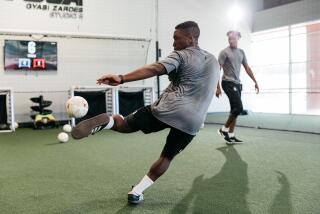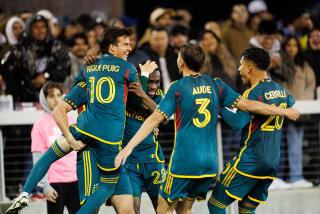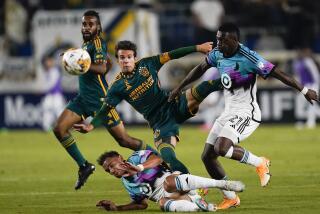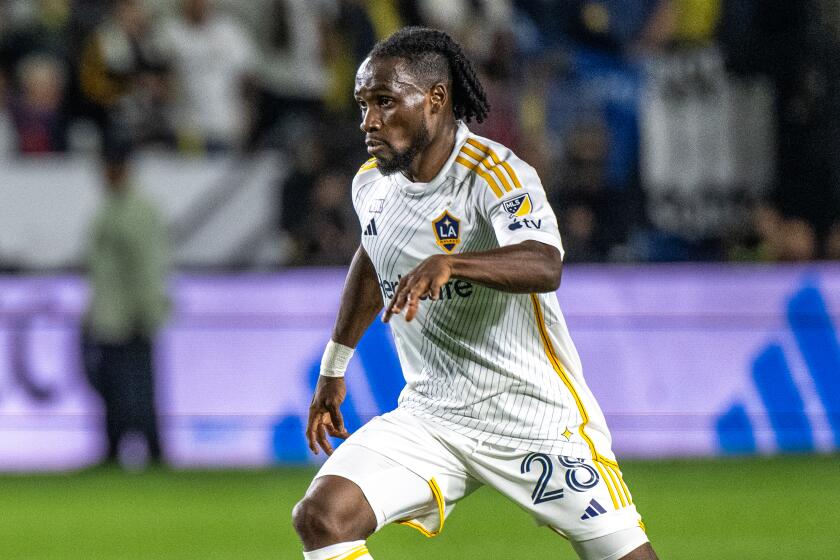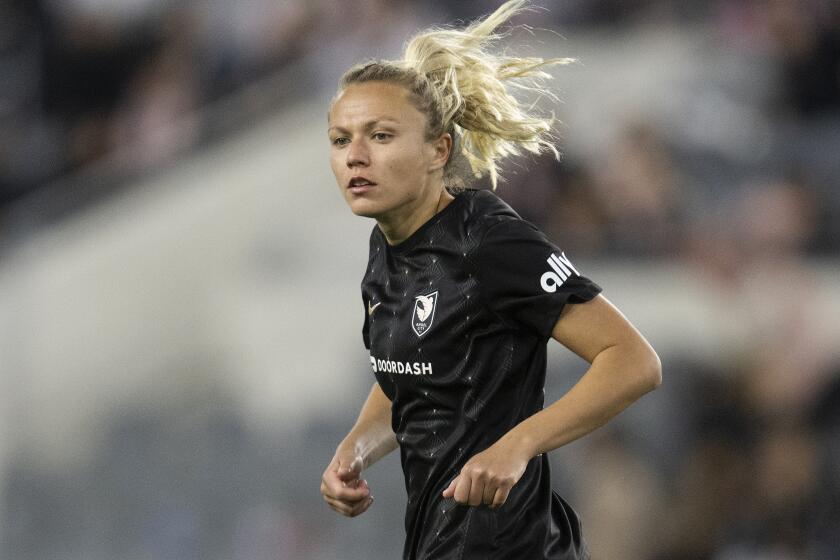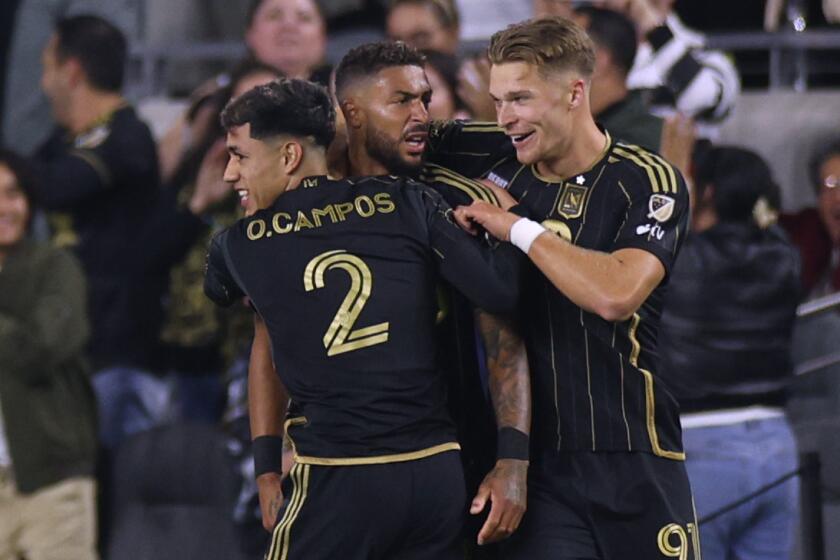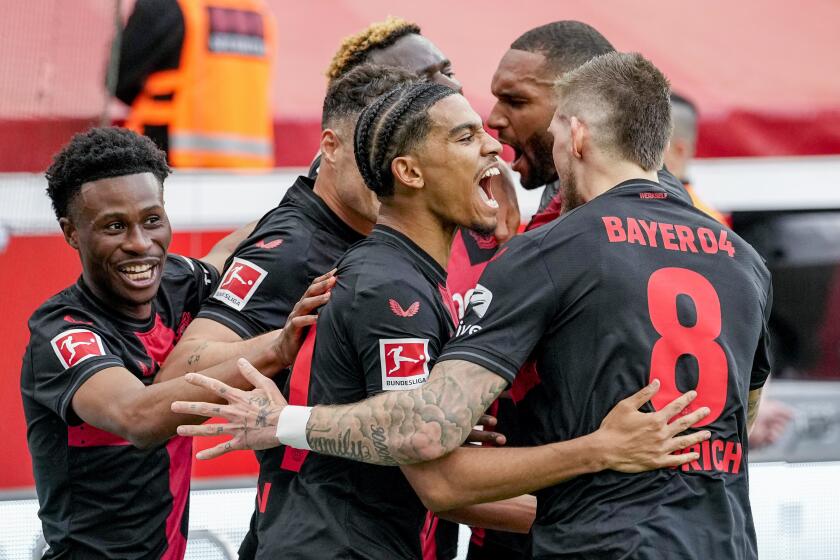For Galaxy II, it’s no minor feat to reach league title game as it develops players for major club

Defender Dave Romney made the transition from Galaxy II in the United Soccer League to the Galaxy in Major League Soccer.
Nineteen months ago, LA Galaxy II played its first game in the United Soccer League, a professional league on the third tier of the North American soccer pyramid.
Friday it will play in its first league championship game, culminating an astonishingly quick rise from expansion club to exceptional one. It’s all well and good, but not exactly what the team’s founders had in mind when they formed the team last year.
“The goal of Galaxy II is not to win the USL championship,” said Chris Klein, president of the Galaxy II’s Major League Soccer parent organization. “If we win on Friday, it won’t mark the total picture of what Galaxy II is all about.”
Galaxy II was intended to be many things to many people. It was supposed to be a finishing school for the Galaxy’s academy players and a halfway house for older players making their way from college to MLS.
It was to be a place to build depth for its MLS overlords by giving game time to youngsters, such as some of the 20 players who suited up for both the Galaxy and Galaxy II this season. It’s also where first-team players could rehab from injuries or learn a new position, as Robbie Rogers did when he made the move from midfield to the back line with Galaxy II last season.
Think of it as a minor league affiliate for a major league baseball team.
Klein’s team was the first in MLS to establish its own USL team. But this season all 20 MLS franchises had a USL affiliate. Some are owned outright by its MLS parent like LA Galaxy II, while others simply partnered with one.
Ownership has had its privileges because the Galaxy, Galaxy II and the franchise’s academy teams have adjoining locker rooms and train and play on adjacent fields, making the path from one to the other easy to follow.
“You have our academy players trying to emulate Galaxy II players. And then Galaxy II players want to be on the Galaxy,” Galaxy II Coach Curt Onalfo said.
Another thing that eases the transition is the fact Onalfo, a self-described disciple of Galaxy Coach Bruce Arena, teaches and plays the game the same way. So when a player is promoted, there is no learning curve.
“If definitely worked in my case,” said defender Dave Romney, who played 17 games for Galaxy II before earning a permanent promotion to the first team. “The biggest thing is confidence, just getting those 20, 15 games under your belt and then slowly getting worked into the first team rather than just initially thrown into the fire.”
For midfielder Rafael Garcia, Galaxy II may well have saved his career. The team didn’t exist when he was drafted out of Cal State Northridge so Garcia languished on the sidelines, starting just one MLS game in his first two professional seasons. But last year, in Galaxy II’s inaugural season, he played a team-leading 1,972 USL minutes.
That experience earned him promotion to MLS.
And if that blueprint doesn’t measure success in victories, it doesn’t preclude them. Especially not on Friday when Galaxy II meets the Rochester Rhinos, an affiliate of the New England Revolution, the team the Galaxy beat in last December’s MLS Cup.
“We want to win,” Onalfo said. “Even though this is a project about developing, we always put an emphasis on winning. Because that’s part of development.”

